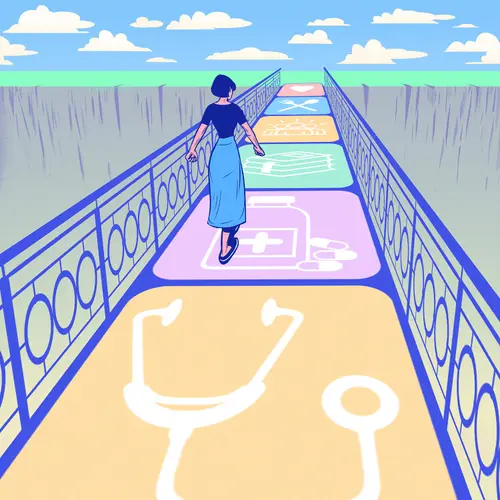A lacunar stroke, also called a lacunar infarct, occurs when an artery that supplies blood to the deeper portions of the brain becomes blocked. Other types of strokes occur on the surface, or cortex, of the brain. Lacunar strokes represent anywhere from 15% to 25% of strokes.
What Is a Lacunar Stroke?
A lacunar stroke occurs when an artery to the deep part of the brain, containing structures like the thalamus or basal ganglia, is blocked. These arteries are very small and branch off directly from a larger artery, making them particularly vulnerable to blockages.
Some small lacunar strokes have no symptoms or side effects. However, some people have multiple lacunar strokes at the same time, leading the development of physical or cognitive disabilities.
People who have had a lacunar stroke are more likely to get dementia after the fact. The older you are when you have a lacunar stroke, the higher the likelihood of experiencing changing abilities after the event.
What Are the Causes of a Lacunar Stroke?
Some lacunar strokes are caused by fatty deposits in the bloodstream. These fatty deposits build up in your arteries over time, leading to atherosclerosis. This leaves less space in your arteries for blood flow and makes them more prone to blockages, in addition to being a potential source of the blockage.
Other lacunar strokes are caused by a thickening of the deep-brain blood vessels, a condition known as lipohyalinosis. Again, this makes blockages more likely by leaving less space for blood to flow.
Risk factors for the conditions that cause lacunar strokes include:
- High blood pressure
- Diabetes
- Smoking
- High LDL cholesterol
- Previous strokes
- Other forms of cardiovascular disease
- Too much homocysteine in the blood, which can be caused by vitamin deficiencies
- Certain genetic conditions
What Are the Symptoms of a Lacunar Stroke?
Lacunar infarcts without any symptoms are fairly common. These lacunar strokes are often found on imaging tests done for other reasons. However, doctors believe that asymptomatic lacunar strokes may be one cause of mild cognitive impairment and early dementia.
Symptoms of a lacunar stroke differ slightly from those of an ischemic stroke (one that occurs closer to the surface of the brain). The symptoms of a lacunar stroke depend on which brain structure is affected. They may include:
- Weakness on one side of the body
- Impaired coordination on one side of the body (ataxia)
- Changes in sensations like temperature, touch, or taste
- Facial weakness, especially in the tongue and larynx
- Difficulty with fine motor skills, like tying a shoe
How Is a Lacunar Stroke Diagnosed?
If you are having a lacunar stroke, doctors will first evaluate you, likely in the emergency room. They will evaluate your symptoms and then order a CT scan. The scan is not meant to identify the stroke, but rather, to rule out other conditions with similar symptoms like bleeding in the brain.
To diagnose a lacunar stroke, your doctor may order a CT angiogram. In this test, doctors put dye into your blood vessels so they can see them in the scan. They can then diagnose atherosclerosis and see blockages.
They may also order a MRI, which is considered the most accurate imaging test to diagnose this type of stroke.
What Is the Treatment for a Lacunar Stroke?
The treatment for a lacunar stroke is similar to those for ischemic strokes. If the stroke symptoms have been present for fewer than 4 ½ hours, your doctor will likely perform thrombolysis. This is a procedure performed to break up blood clots using either medication or a mechanical device.
If you have had symptoms for longer than 4 ½ hours but less than 24 hours, your doctor may perform a thrombectomy. This is surgery to remove blood clots.
After either of these procedures, your doctor will put you on blood-thinning drugs for at least 90 days to prevent more clots from forming.
After a stroke, your doctor may also prescribe medication to help manage blood pressure, blood sugar, and any other risk factors.
In general, after any kind of stroke, you will need different types of therapies for the first several months. They can include:
- Occupational therapy
- Physical therapy
- Speech-language therapy
While you're still in the hospital, you may have therapy up to six times per day. In general, your therapy will focus on improving your ability to do the things you need to do every day, like taking a shower or cooking and eating.
Can You Recover from a Lacunar Stroke?
About 33% of people who have had a lacunar stroke eventually experience a full reversal of symptoms. Most others have a long-term disability.
Because of the risk factors for a lacunar stroke, people who have had one have a higher risk of cardiovascular disease. Up to 11% of people who have had a lacunar stroke will have another.
The mean age for a lacunar stroke is age 65. They tend to happen more frequently in older people. The younger you are when you have one, the less likely you are to have a disability afterward. Those who have cardiovascular disease and depression after a lacunar stroke are also more likely to have a disability in the years following a stroke.

